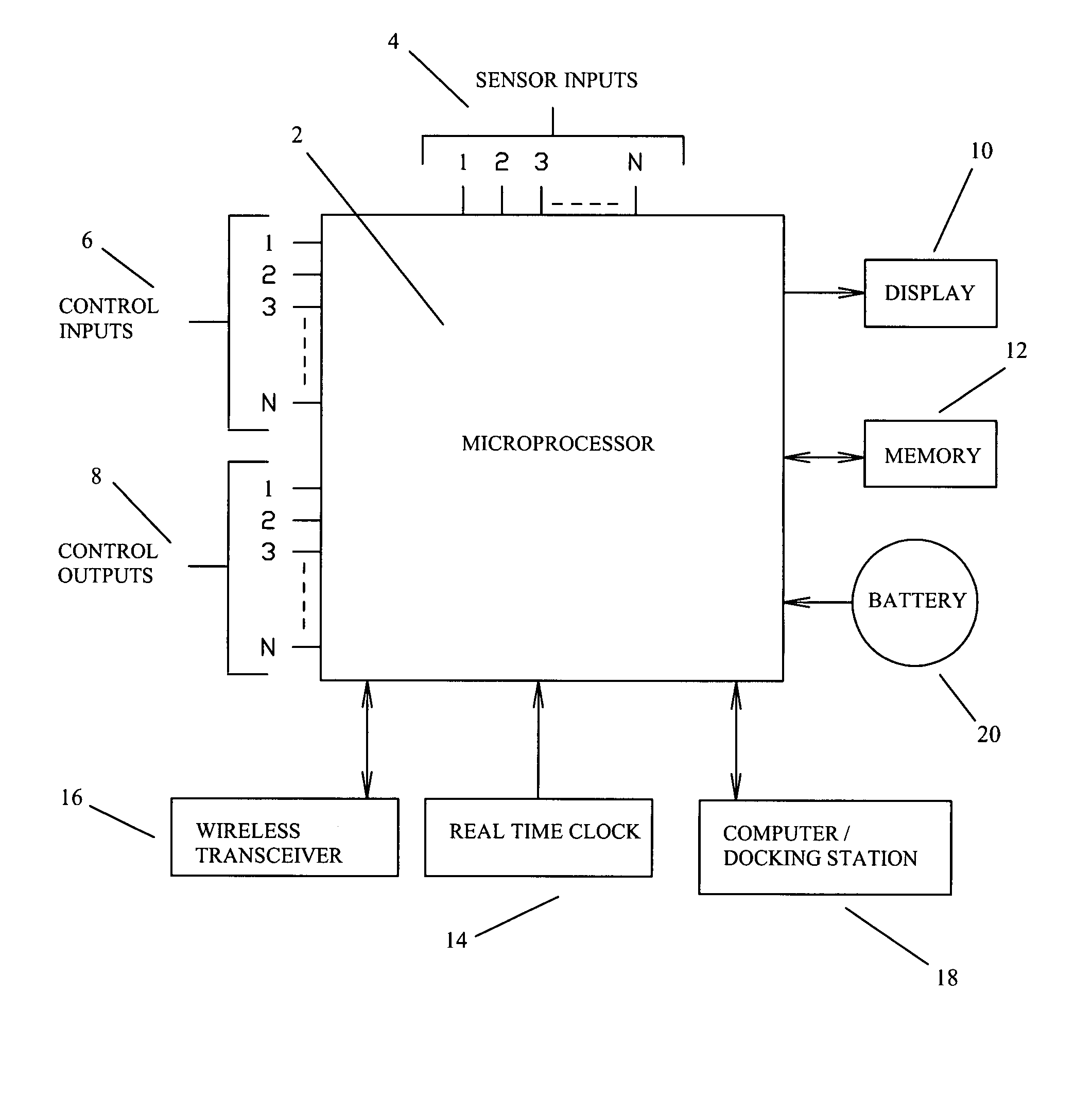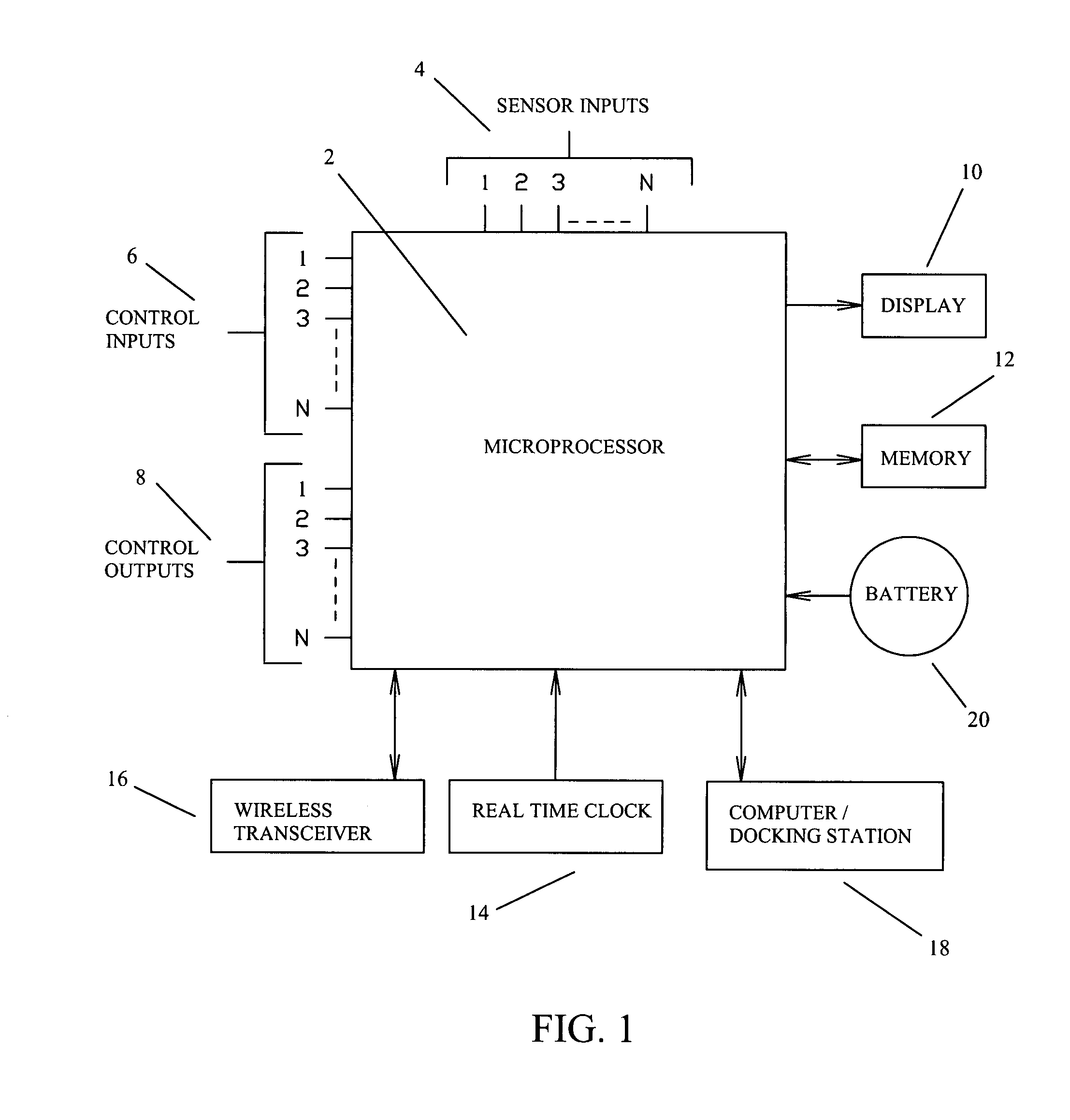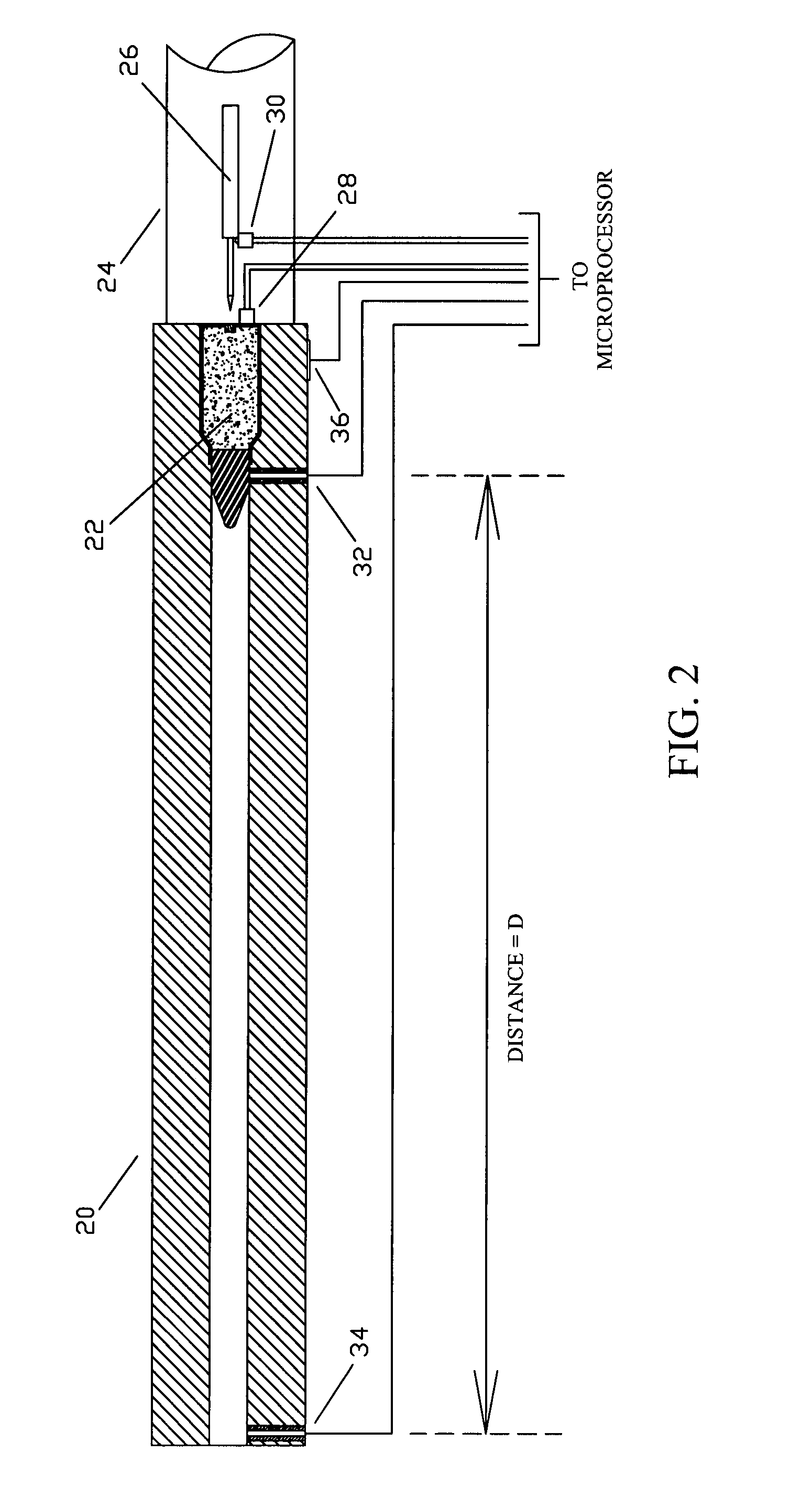This is particularly bad when one's life is at stake.
Conversely, users thinking that a firearm is not ready to fire, pick up a firearm and cause an accidental discharge.
Additionally, the firearm system could notify the user as to how many rounds are available in the firearm.
However this requires additional equipment to be purchased and set-up by the user, and is not conveniently located in or on the firearm itself.
However, this invention suffers from the following limitations:Does not take advantage of electronics embedded into the rifle scope.Is unable to measure the actual bullet velocity (no bullet chronograph).Cannot measure the actual distance to target.Is unable to determine actual bullet drop compensations due to missing chronograph.Requires equipment outside of the rifle & scope combination in order to understand the reticle spatial relationships.The reticle is fixed and unable to be electronically adjusted.Requires the user to perform confusing mental gymnastics in order to mentally superimpose the ballistics table onto the fixed reticle.
Once the range-to-target is obtained, the on-board microprocessor calculates the required bullet-drop-compensation, and adjusts a compensation cross-hair [It should understood that this is a very difficult patent to understand, and arguably does not contain adequate information for one skilled in the art to understand and build such an item.
In either case however, the numeric display is obviously not in direct alignment with the scope optics.
This presents obvious challenges for the user.
Additionally, this ignition system is not applicable to traditional mechanically fired firearms.
Although an interesting invention, this device is not capable of having a dynamically adjusted reticle, as the reticle is permanently etched on the device optics.
This is not always the case and can cause false readings.
This is an obvious danger as a user may think the firearm is unloaded when it actually isn't.
However, this invention suffers from the following shortcomings:Is unable to provide continued operation of the paintball gun when the battery dies, or if the electronics otherwise fail.Is unable to determine if the paintball gun has a loaded chamber.Is unable to determine how many shots remain in the paintball gun.Is unable to determine if the paintball gun is cocked.Is unable to determine the position of the paintball gun safety mechanism.Is unable to provide the “Go / No-Go” ready status (loaded chamber, cocked, safety off) of the paintball gun.Is unable to measure the efficiency of the paintball gun mechanical action.Is unable to differentiate between operating the paintball gun mechanical action by hand, or by discharging the paintball gun.Is unable to combine the above information and interpret whether or not the paintball gun has been discharged.Is unable to differentiate between a “dry-fire” trigger-pull, and actually discharging the paintball gun.Is unable to determine with what velocity a paintball was discharged (no paintball chronograph).Is unable to differentiate between cleaning the paintball gun barrel, and taking a chronograph reading.Is unable to measure the distance to target.Is unable to combine the paintball velocity and distance to target information to calculate “paintball drop” compensation.Is unable to adjust the reticle on an optical scope to correspond with the “paintball drop” compensation.Is unable to cradle the paintball gun in a docking-station.Is unable to be remotely controlled by a “command and control” center.
Further, the microprocessor may time stamp these events as they happen.
 Login to View More
Login to View More  Login to View More
Login to View More 


